While studying physical therapy, the founders of Universal Vests learned to use a gait belt to lift and transfer patients just like every other aspiring PT student. After working in the field for a few years, they grew frustrated with the one-method-fits-all approach and began brainstorming other options. Wheel:Life writer Betsy Bailey spoke with one of the founders of Universal Vests at Abilities Expo New York Metro and got the full story on how the idea came about along with a demonstration of the newly launched product.
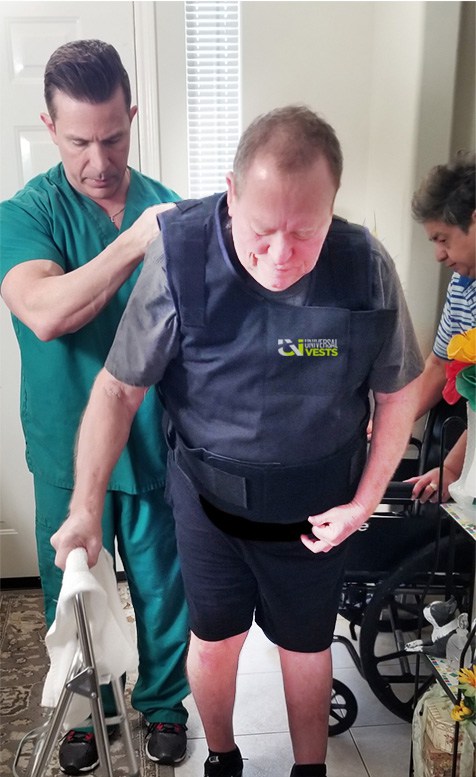
The majority of all caregivers and physical therapists are using a gait belt. However, for patients who have severe balance issues, need transfer and lift support, or are wheelchair users, the gait belt doesn't give them full support, especially if the therapist or caregiver is small or not very strong. The gait belt tends to rub and slide and requires a caregiver to continually adjust it. This almost always causes significant discomfort to the patient.
Once, I had a young patient with cerebral palsy, and I wanted to get him into the pool. So, I put a gait belt on him, but it kept slipping, and I wasn’t able to hold him very well. I got really frustrated. That evening, I went to Home Depot, bought a construction vest, and had my mom sew some handles on it. Thanks in large part to the inspiration from that experience, we’re launching Universal Vests.
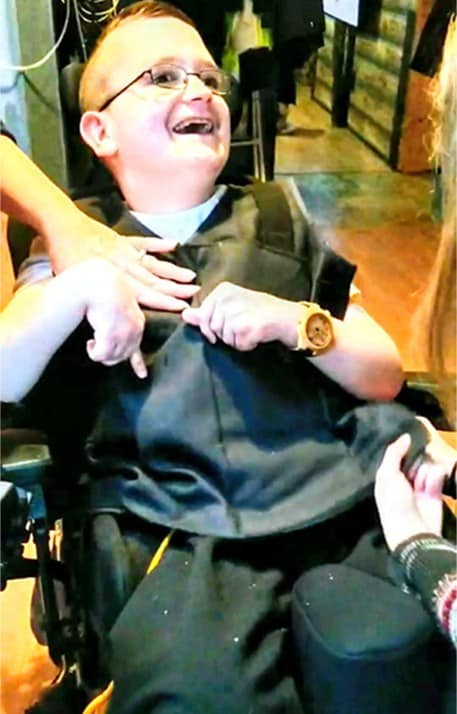
People don't realize how tough lifting and transferring patients is day in and day out, even with a child.
If you transfer a 60-pound child 10 times a day, it's really tiresome. Hospitals, universities, and physical and occupational therapy schools love these vests.
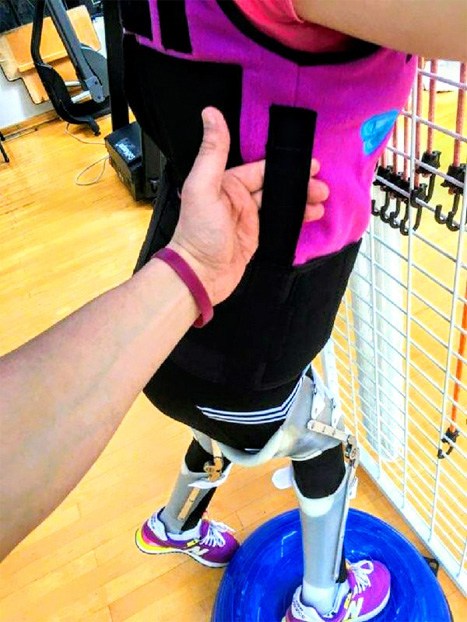
They've been teaching traditional methods, and now, they realize there's something better.
I don't mean to put down the gait belt, but it's time to move on.
Editor’s Note: During the interview, I took part in a demonstration in which both the gait belt and a Universal Vest were used on me. Although I had never had either device used on me in the past, I noticed a significant difference between the two. The vest felt snug and cozy, and while being transported, there were no pressure points or uncomfortable digging or rubbing around my midsection as was the case with the gait belt.
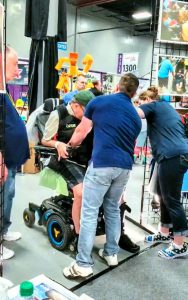 We custom fit all of our patients. The vest can be made from water-resistant materials, cotton, or a combination of the two. There is also an integrated compression system so the vests fit snuggly. Our vests have numerous applications. We can put in hot or cold packs, turtle shell front and back braces, or short spine boards to support the spine. We can add fleece material if someone needs a little extra warmth. We can create openings for patients with medical devices, such as G-tubes. Some versions of our vests can be used to safely pick up someone who weighs up to 350 pounds.
We custom fit all of our patients. The vest can be made from water-resistant materials, cotton, or a combination of the two. There is also an integrated compression system so the vests fit snuggly. Our vests have numerous applications. We can put in hot or cold packs, turtle shell front and back braces, or short spine boards to support the spine. We can add fleece material if someone needs a little extra warmth. We can create openings for patients with medical devices, such as G-tubes. Some versions of our vests can be used to safely pick up someone who weighs up to 350 pounds.
The vests also come with a cape system. If a heavy person falls down, caregivers often only have the option of calling an ambulance to get them up off the ground. With our cape system, you don’t have to do that anymore if emergency medical services aren’t needed for any other reason. The cape folds out and becomes a gurney allowing two people to safely lift the person.
We also make a lower body kit which acts similarly to the cape. This is a very popular option for wheelchair users because it straps their legs together while they are being transferred.
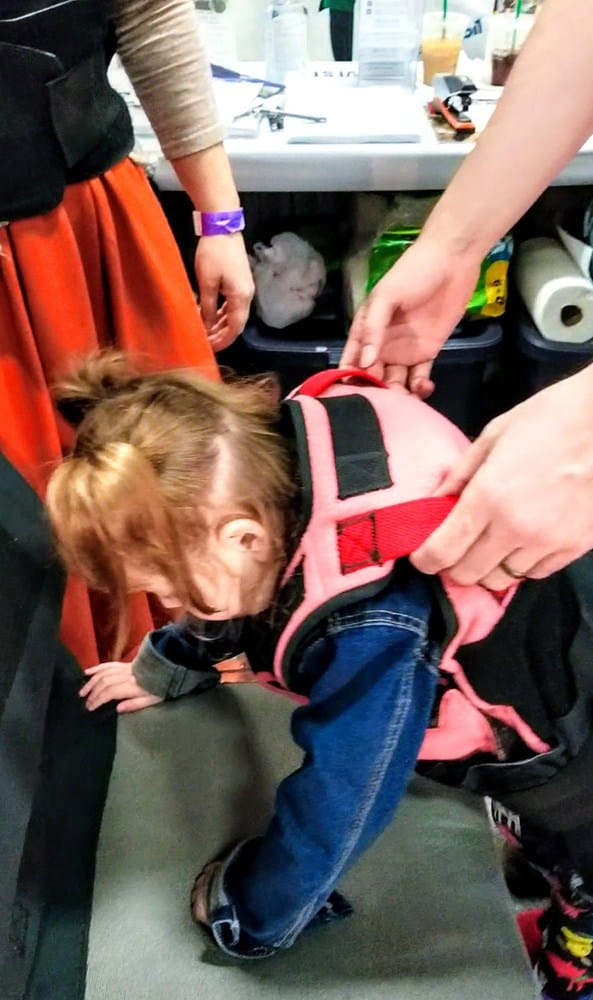
We’ve had customers tell us that the vest gives them some quality of life back. Before, transferring patients was quite cumbersome with the various lifts on the market. Those fulfill their purpose, but they can be inconvenient and expensive. We’ve had some people buy our vests to be able to get on an airplane more easily. Airlines have limited equipment to aid passengers, and our customers have told us they are not very user-friendly. Our vests can make it easier to help passengers get into their seat.
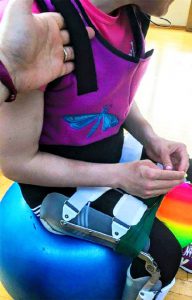
We started something that has touched not only what we wanted to do originally in the healthcare field but also has so many other applications and potential to evolve even further.
We have some doctors in Houston doing a trial test run with the vests to see if the compression system can help with seizures in epileptic patients. We're really excited to see the results of that.
On the industrial side, we have interest from organizations involved with providing emergency response services. Some versions of our vests can be used to lift people out of natural disasters from helicopters. Without this vest, it could take several people to lift someone out of a flood situation. We’ve also created a version with bladders so that while sitting in flood waters and waiting to get rescued, caregivers, hospitals, and nursing facilities can put these on patients, activate the bladders, and it becomes a flotation device.
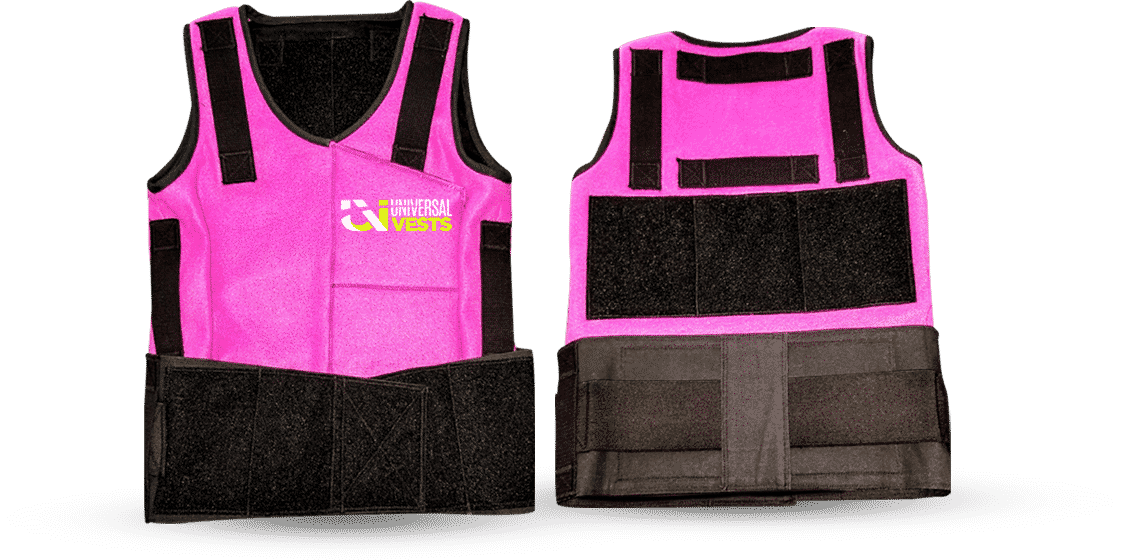
We didn't create Universal Vests to make money. We created it because we saw a need that wasn't being fulfilled.
Editor’s Note: For more information on pricing and customization, visit Universal Vests’ website at www.uvests.com or send an email to sales@uvests.com. You can also watch several video demonstrations of the vests in action on the Universal Vests Instagram channel and Facebook page.
This article was extracted from an interview with one of the founders of Universal Vests. It has been edited for clarity and length.
Betsy Bailey has a diverse background including experience in marketing research at American Express, business operations and client relations with 601am, travel and culinary writing with VegDining, and playing volleyball professionally overseas.
Betsy is excited to get back into writing, something she’s adored since childhood, and thoroughly enjoys the process of getting to know her interviewees. On top of her work with Wheel:Life, she also teaches students learning English as a second language, speaks French fluently, and travels any chance she gets!